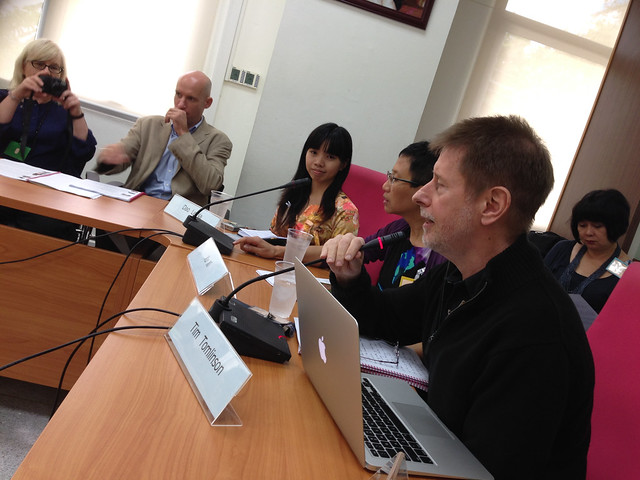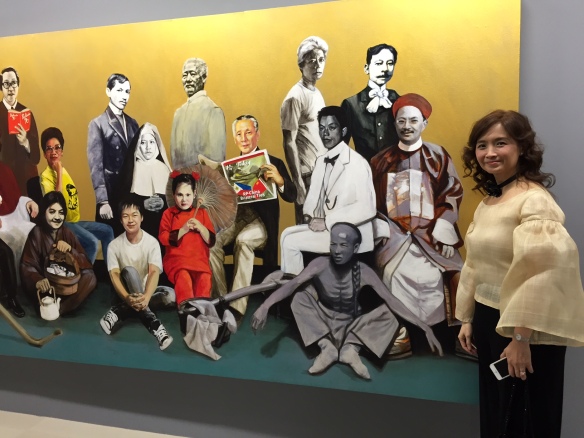Penman for Monday, March 30, 2015
LIKE I promised to do after an all-too-brief overnight sortie last January, I returned to my birth province of Romblon a couple of weeks ago—my first real visit home in almost 20 years—for a full week of catching up with a barangay of cousins, uncles, and aunts, some of whom hadn’t seen me since I was a boy.
But the family reunions and the endless festivities aside, what stood out on this trip was a foray into Fairyland—a highly unusual detour for this hardcore skeptic, who nevertheless went gamely along for the ride, and who came out richly rewarded with fairy tales if not with actual encounters with the other kind.
You won’t see it in any of the tourist guidebooks, and you might need to know the cousin of a cousin to navigate safely around the place. They call it Calatong—a word for which, in the local dialect of Guinbiraynon, there seems to be no precise translation, but it’s otherwise known even to the place’s youngsters as fairyland, the mountain inhabited by encantos, the enchanted ones. It dominates this corner of Romblon’s largest island of Tablas, both physically and culturally; from far at sea, Calatong’s tall hump offers an unmistakable landmark; by land, along the winding dirt road from Alcantara to Guinbirayan, it rises on your left, a massive mystery, although it might take some time and tuba to get the stories about Calatong flowing through the conversation.
I had seen and known about Calatong from my earliest years in Guinbirayan—my mother’s hometown—and even on this most recent visit, it was the first thing I would see outdoors when I stepped out of the house at daybreak, because the sun would emerge from behind it like a glowing crown above a dark and brooding head.
But I had never gone out there, although it seemed close enough to walk from where I stood on the shore. On this trip, at age 61, I told myself that it was now or never, and on the appointed morning we rode out to Calatong, but not before Letty, the retired schoolteacher who kindly hosted us, armed each one of us with a sliver of ginger. My mother Emy, now 86, had not been back to Calatong since she was a nine-year-old schoolgirl on a field trip with her class. “My teacher never let me out of her sight the whole time we were here,” my mother said as we parked the SUV as far up the dirt road as it could go. We walked up to the shore and took a banca over the glassine water—now turquoise, now emerald—to view the mountain from the sea, turning back only when the waves grew choppy.
It’s said that during the War, when the Japanese flew over Calatong, they saw a brightly lit city, but then found nothing on the ground. This gave rise to the legend of Calatong as a ciudad, the name by which many of the locals still call it.
Somewhere in that sylvan cosmopolis was a waterfalls or a spring they called Labhang Dalaga, or “where the maidens washed,” from which flowed bubbly water, fragrant as if it had carried soap. We didn’t venture far enough inland to catch this frothy spectacle, but the rocks did sparkle in the sun in Calatong, as we were told they would; it was easy to see that the rocks were granitic, and contained liberal inclusions of quartz and mica, among other shiny minerals.
The mountain resists poachers and souvenir-hunters unless they’re locals who respectfully ask permission. They say that a woman who picked up a black rock and brought it home was horrified to find that the rock, left in her bathroom, had turned into a snake. A man who reportedly dug up oil and brought it out would find his precious discovery turning to water. There’s talk of siphoning water from Calatong to serve the nearby barangays, but already there’s grumbling about irregularities in the process, and about the likely consequences of displeasing the spirits.
The encantos, our cousins said, were fair-skinned, and one way of ascertaining who they were was to note the absence of a philtrum—that depression in the skin on your upper lip beneath your nose. The encantos liked to come to town to join the dances during the fiesta, when beautiful strangers typically appeared from nowhere, enjoying themselves and charming the locals. The encantos seemed to particularly favor the pretty nurses from far away who came to serve in Romblon as part of their martial-law-era YCAP duties. The antidote to their charms was to eat quinta, or black mountain rice; marriage to a local boy also seemed to ward off any further claims by the spirits—so swore my cousin Fred, who thereby met and married his wife Nanette.
You had to be careful about whom you made friends with, as a boy would realize when he accompanied his new friend home, and made the Sign of the Cross to be on the safe side of things—only to suddenly find himself hanging from the limbs of a tree. The townspeople would also see their neighbors jumping out their windows—and these neighbors would later return with fantastic stories about riding golden chariots over the mountaintops.
The most persistent story also happens to be the most fantastic one, its incredibility only magnified by the insistence of the storytellers upon its veracity. Among those storytellers was an aunt-figure we’ve always known as Manang Munday, who recounted her story at the dining table, thusly:
One mid-afternoon in 1942, when she was in the fourth grade, Manang Munday heard a large commotion brewing and joined a throng of people rushing to the Guinbirayan shore. There, she says, she and the others saw a light-colored ship—the kind that plied the Romblon-Manila route—with the name “COSME YAP” brightly emblazoned in gold letters on its side. It sailed behind Calatong, but when the people tried to follow it and view it from afar, it was nowhere to be found. Years later the villagers would swear that they had heard the sound of an anchor chain being unwound in the night from the direction of Calatong.
Cosme Yap was my maternal grandfather, a merchant and a goldsmith, one of the richest citizens of Guinbirayan in his time. Lolo Cosme did own a sailboat, a batel as they call it in those parts, but it rather dramatically sank in a storm on its maiden voyage, Titanic-like (his wealth survived the catastrophe, but how it eventually vanished is another novel unto itself, albeit an unimaginatively prosaic one). The boat and the gold probably explain the persistence of this tale, and of its variations. Relatives say that when my Aunt Nieves was close to death, she had a vision of Lolo Cosme coming to fetch her in a golden airplane.
Again, unlike my sweet Beng who’s wired to the Universe, I don’t believe in spirits—but if something golden flashes before my eyes in my final hour, at least I’d have an inkling where that was coming from.









